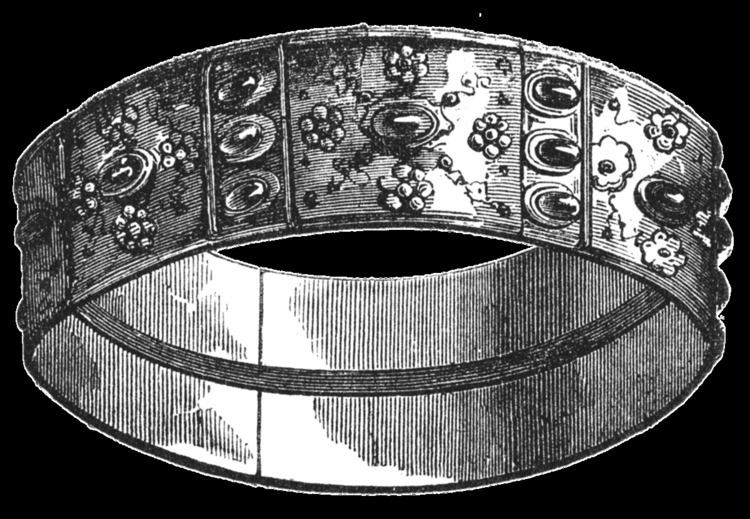 | ||
The Kings of the Lombards or reges Langobardorum (singular rex Langobardorum) were the monarchs of the Lombard people from the early 6th century until the Lombardic identity became lost in the 9th and 10th centuries. After 568, the Lombard kings sometimes styled themselves Kings of Italy (rex totius Italiae). After 774, they were not Lombards, but Franks. The Iron Crown of Lombardy (Corona Ferrea) was used for the coronation of the Lombard kings and the kings of Italy thereafter for centuries.
Contents
- Legendary rulers
- Lething Dynasty
- Gausian Dynasty
- Unnamed dynasty
- Bavarian Dynasty
- Non dynastic king
- Harodingians
- Bavarian Dynasty First Restoration
- Beneventan Dynasty
- Bavarian Dynasty Second Restoration
- Non dynastic kings
- Carolingian Dynasty
- References
The primary sources for the Lombard kings before the Frankish conquest are the anonymous 7th-century Origo Gentis Langobardorum and the 8th-century Historia Langobardorum of Paul the Deacon. The earliest kings (the pre-Lethings) listed in the Origo are almost certainly legendary. They purportedly reigned during the Migration Period. The first ruler attested independently of Lombard tradition is Tato.
Legendary rulers
Lething Dynasty
The Lethings were an early dynasty from the time of Lethuc. The last ruling descendant of Lethuc was Walthari, whose son was in turn displaced by Audoin of the family of the Gausi.
Gausian Dynasty
Gausian Dynasty
Unnamed dynasty
Bavarian Dynasty
Non-dynastic king
Harodingians
Bavarian Dynasty, First Restoration
Beneventan Dynasty
Bavarian Dynasty, Second Restoration
Non-dynastic kings
Carolingian Dynasty
Charlemagne conquered the Lombards in 774 at the invitation of Pope Adrian I.
The title rex Langobardorum, synonymous with rex Italiae, lasted well into the High Middle Ages, but subsequent holders are found at King of Italy.
